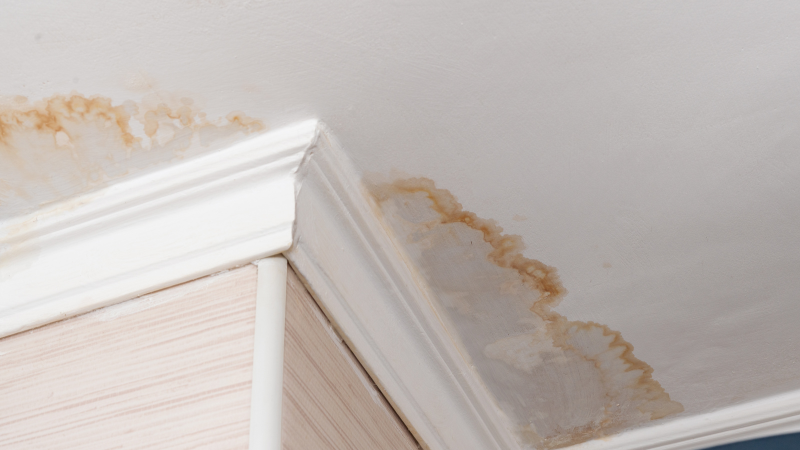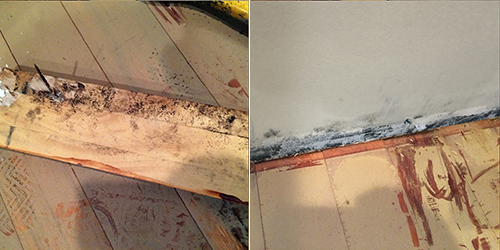Looking for Indicators of Water Damage in the Bathroom
Looking for Indicators of Water Damage in the Bathroom
Blog Article
Are you looking for critical information about Common Causes of Water Damage in a Bathroom?

The washroom is incredibly at risk for damp buildup and possible water damage because of the frequent use of water in it. This short article supplies easy examination techniques to aid spotting water damages hazards.
The regular use water in the bathroom makes it very vulnerable for damp buildup and prospective water damages. By inspecting it on a regular basis, you can reduce water associated problems.
The following set of examinations is simple to execute and ought to be done as soon as in every three months in order to keep your shower room healthy and to prevent potential water damages triggered by the bath tub, the shower, pipeline joints and plumbing, sinks, cupboards, as well as the commode
Do not neglect carrying out these assessments and also be detailed while performing them. Keep in mind that these easy assessments can conserve you a great deal of cash by providing early indications for water damage
Sinks as well as Cabinets
Sinks as well as cupboards are revealed to dampness and humidity daily and are typically ignored. Check consistently under the sink and also on the counter top over it. Repair any drip in the trap as it may suggest drain issues. Take a look around the sink, sluggish draining pipelines might show a blocked drain. Replace sink seals if they are broken or loose.
Bathtub and Shower
The shower and bathtub require special focus and also upkeep. Examine the floor tiles and also change if split. Make certain that there is no missing grout between the tiles. Inspect and also change split caulking at joints where the wall surfaces satisfy the floor or the bathtub. Clogged drains pipes and also pipelines troubles will certainly stop the tub from drying and may show severe issues below the bathtub. Consult with a specialist promptly to avoid structural damages. Take notice of stainings or soft areas around the bathtub wall surfaces as they might indicate an internal leakage.
Plumbing
Signs for water damage are hard to detect given that a lot of pipes are installed inside the wall surfaces.
Pay special attention to floor covering as well as walls dampness as well as stains as they might suggest an unnoticeable plumbing trouble. Check dampness levels in adjoining areas also.
The Commode
The bathroom is a susceptible water junction. Check the water lines and also look for leaks around the commode seat, in the pipe, and under the water container. If you discover any indications of moisture on the flooring around the toilet, look for leaks in the toilet edge as well as tank seals.
Know that hanging toilet dish deodorants boosts the chances for obstructions.
Water Damage Signs In The Bathroom To Avoid Cleanup
Musty smell
This is one of the easiest signs to catch because musty smells are so odorous. The damp, earthy, moldy smell should be a big red flag. The smell will develop when moisture gets trapped in surfaces, and begins to facilitate mold growth. Leaking pipes under cabinets, inside walls, and behind shower fixtures will cause moisture to stay trapped and not dry, which will lead to mold growth and spread. As soon as you notice any musty smells in your bathroom, have it checked for hidden water damage and cleanup signs.
Visible mold
If the smell isn’t there to give it away, sometimes you will actually see mold growth. Finding mold in your bathroom is a serious problem, because mold is very harmful to your health. By the time mold growth is visible, it also means that water damage has already occurred and been present for some time. The only way the mold problem can be resolved is to find the source of the moisture and get it stopped. To safely and adequately remove mold, you need to have professionals handle the remediation. Do not waste any time in getting mold problems addressed, fixed, and sanitized so that you can protect you and your family from the many respiratory symptoms caused by mold exposure.
Damaged floors
Bathroom floors should be able to withstand some exposure to water while still remaining in good condition. However, when excess exposure or water leaks occur, they will begin to damage even the most water-resistant flooring. If you notice any cracking, bubbling, staining, or warping on your bathroom floors, there is probably a water leak somewhere causing the distortion. If you notice areas of the floor have become softer, or even have a spongy feeling, there is probably damage to the subfloor. Subflooring is typically made up of plywood. When plywood is exposed to water or moisture, it will absorb it. Once it has become saturated, the weight of the excess water will cause the wood to swell and soften. Check the floors in your bathroom frequently to catch any of these sings before they lead to damaged subflooring.
Changes on walls
When water leaks behind walls, it will cause changes in the drywall. Peeling plaster, blistering paint, and soggy wallpaper are all good indicators that excess water is building up behind the wall. Water leaking behind drywall will cause it to swell and be soft to the tough. If you start to notice gaps along the trim of your walls, or where tile meets the wall, it could also be a strong indicator that there is a leak behind the wall. Any changes, distortion, or damage on the walls should be evaluated as soon as you notice it to prevent further water damage and cleanup.

Do you enjoy reading up on Common Causes of Water Damage in a Bathroom? Try to leave a remark down below. We'd be glad to find out your opinion about this write-up. We hope to see you back again soon. Sharing is caring. Helping people is fun. Thanks for going through it.
Booking Report this page